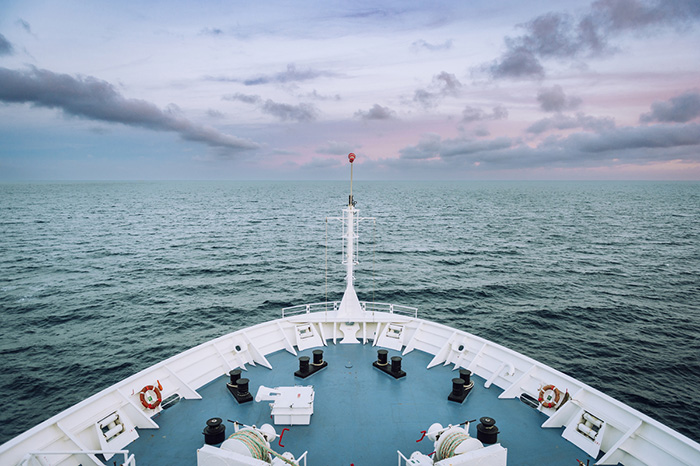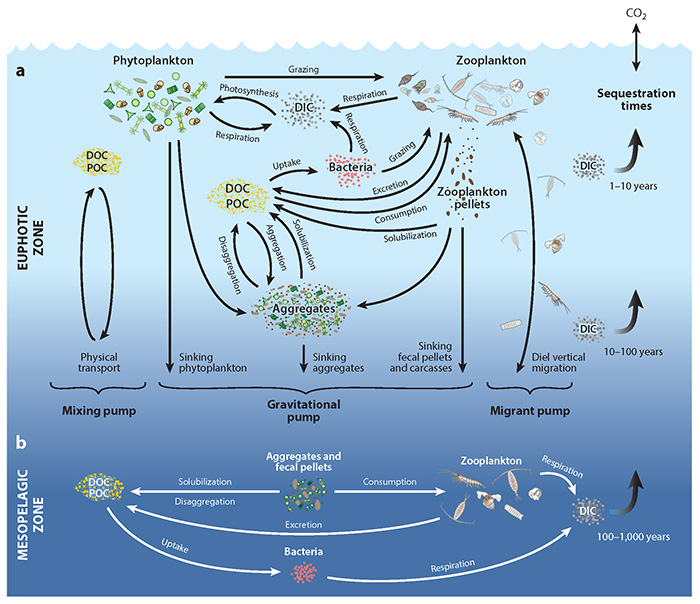
Oceanographic cruise to further elucidate how ocean stores carbon
|
|
The APERO oceanographic cruise kicks off on 2 June 2023. To refine our understanding of oceanic carbon sequestration, a group of scientists—most of them affiliated with the CNRS, Sorbonne University, and Aix-Marseille University—will take to the seas for 40 days onboard two ships from the French Oceanographic Fleet (FOF) operated by IFREMER on behalf of the French scientific community. The APERO cruise is international in breadth and brings together some 120 scientists to pursue an ambitious strategy of ocean observations at depths comprised between 200 and 1000 metres, complemented by innovative approaches in modelling and molecular biology. APERO is supported by the French National Research Agency (ANR).
Ocean carbon sequestration is essential to climate regulation but is still poorly understood. We do, however, know that it relies on the biological carbon pump by which carbon dioxide (CO2) at the ocean’s surface is incorporated into organic matter when absorbed by phytoplankton. This matter is held in particles that sink to greater depths, where they remain for centuries. Over 10.2 gigatonnes of carbon are thus exported annually from the surface to depths of over 200 m. Were it not for the biological pump, our planet’s atmospheric carbon levels during the pre-industrial period would have been roughly 40% higher.
The APERO oceanographic cruise1 —co-directed by CNRS researchers from the Laboratory of Environmental Marine Sciences (CNRS / Université de Bretagne Occidentale / IRD / IFREMER), the Mediterranean Institute of Oceanography (CNRS / Aix-Marseille University / IRD / University of Toulon), and the Laboratoire d’Océanographie de Villefranche (CNRS / Sorbonne University)—will allow scientists to study the dynamics, processes, and actors of the biological carbon pump in greater detail. Between 2 June and 17 July 2023, 65 members of the APERO scientific team—over 120 strong—will sail the open north-east Atlantic2 aboard the FOF’s Thalassa and Pourquoi pas?
A diverse range of instruments will be deployed for observations and sampling at depths between 200 and 1,000 m. The data obtained will be used to construct a comprehensive database and exploited through innovative techniques from the field of molecular biology. They will let researchers quantify and characterize the carbon contained in sinking particles; identify the marine species and biological functions integral to the pump; and precisely model carbon flows associated with the migrations of these species as well as their consumption and release of carbon.
By deepening our knowledge of the biological carbon pump in this way, it should eventually be possible to define the consequences of climate change on the ocean’s capacity to soak up carbon.
Follow APERO news through the cruise’s website and Twitter feed.

© Cyril FRESILLON / MIO / Ifremer / CNRS Images

© Siegel DA, DeVries T, Cetinić I, Bisson KM. Quantifying the ocean’s biological pump and its carbon cycle impacts on global scales. Ann Rev Mar Sci. 2003;15:329–56.
- 1Embodying a spirit of international cooperation, APERO (Assessing marine biogenic matter Production, Export and Remineralization: from the surface to the dark Ocean) is linked with the JETZON programme and backed by NASA through the Ocean Exports campaign. It associates over 15 French, European, and North American research laboratories specialized in environmental science, oceanography, climatology, computer science, and biology—most affiliated with the CNRS, Sorbonne University, Aix-Marseille University, Université de Bretagne Occidentale, the French National Research Institute for Sustainable Development (IRD), Université du Littoral Côte d’Opale, and Nantes Université.
- 2Specifically, the cruise will be carried out near the British Porcupine Abyssal Plain Sustained Observatory, approximately 570 km south-west of Ireland.


